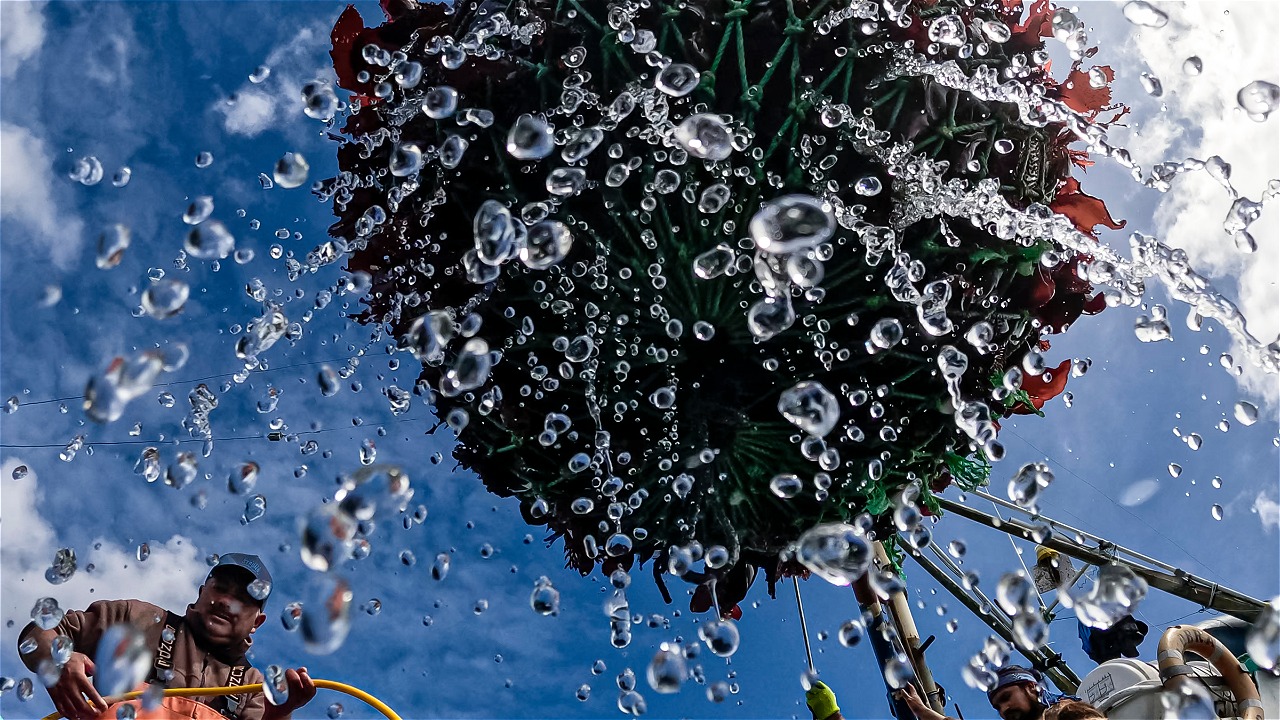IDENTIFICATION OF POTENTIAL SEAWEED AND GROUPER FARMERS IN SOUTHEAST MALUKU
By: Faridz R. Fachri (Fisheries Business Officer, WWF-Indonesia Kei Project)
In early June 2015, WWF-Indonesia together with the Southeast Maluku Marine and Fisheries Office identified seaweed and reef fish (grouper) farmers in the Southeast Maluku Regency. This activity was carried out as a form of support for responsible and environmentally friendly aquaculture practices in accordance with the mission carried out by the JARING-Nusantara collaboration. The identification focused on the Hoat Soarbay area, for seaweed commodities; and Ohoi Faan for grouper fish.
Hoat Soarbay was chosen as the identification location for seaweed cultivation because geographically, the bay, which extends up to 17 km, allows for seaweed cultivation throughout the year. This is because the location is not affected by the west and east monsoon winds. The existence of a fairly dense mangrove ecosystem along the bay and active current conditions due to tidal forces, are also very good for supporting the cultivation process.
Based on the cluster of seaweed development in Southeast Maluku Regency, Hoat Soarbay is included in cluster 2 combined with cluster Debut. There are three village locations (Ohoi) in Hoat Soarbay that were identified, namely Ohoi Evu, Ohoi Wab Arso and Ohoi Letvuan. Also participating in this activity were Victor Sirkin, Chairman of Ohoi Evu Cultivation Group); K. Kadmaerubun, Chairman of Ohoi Wab Arso Cultivation Group and Chairman of Arso Star Group; and Gabriel, Chairman of Ohoi Letvuan Cultivation Group.
The seaweed commodity developed in these three locations is the type of cottoni (Kappaphycus alvarezii, previously known as Euchema cottoni) including three variants: green (birbirbir), brown (tumtum) and red (walwuf). The cultivation method used is longline with a modified anchor to peg system - commonly called "shock" by the local community - which is quite innovative in anticipating muddy bottom conditions and water depth conditions (7-10 m). The anchor is made from a piece of wood tapered at the end and tied with rope (size 8-12), then inserted into a tube and driven into the muddy bottom. The entire piece of wood goes into the mud and the rope is connected to a longline in the direction of the current. In contrast to this innovation, the usual anchor method is less able to withstand the push of the current.
The constraints of seaweed cultivation in this region are still around the symptoms of ice-ice which attacks in the transitional season, especially November-December. Ice-ice is an infection characterized by red spots or blotches on some thallus which over time becomes pale yellow and gradually becomes white, finally disintegrating or falling off. This symptom occurs due to the age of the seaweed, lack of nutrients, or stress from sudden changes in environmental conditions. The Arso Star group has conducted experiments using tissue culture seedlings from Lampung to improve seaweed resistance to ice-ice. Observations that have been made, show a positive trend, the development of cottoni tissue culture seedlings is quite good, having more branches and shoots, when compared to local seedlings. They plan to monitor their growth and resistance to ice-ice until the second transitional season at the end of 2015.
Unlike seaweed, grouper cultivation is quite difficult to find in Southeast Maluku Regency. It is suspected that the problem lies in the difficulty of obtaining seedlings from the hatchery, the high capital, and the need for intensive care. Only one aquaculture activity was identified, namely the cultivation of rat-mouth grouper (Cromileptes altivelis) using a floating net cage (KJA) system with a plot size of 3m x 3m x 10m, owned by Mr. Yoseph Sikteubun in Ohoi Faan. There are no similar aquaculture activities in the vicinity of his pond. Based on information, the grouper seeds come from Ambon with a length of 7-9 cm and a price of Rp. 1,500/cm. To operate, about 4,000-5,000 seedlings are needed.
The information obtained from the identification activity will be used as reference material in the assistance of Aquaculture Improvement Program (AIP) in Southeast Maluku Regency according to Better Management Practice (BMP), as well as adjusting to the Aquaculture Stewardship Council (ASC) aquaculture management standards.





